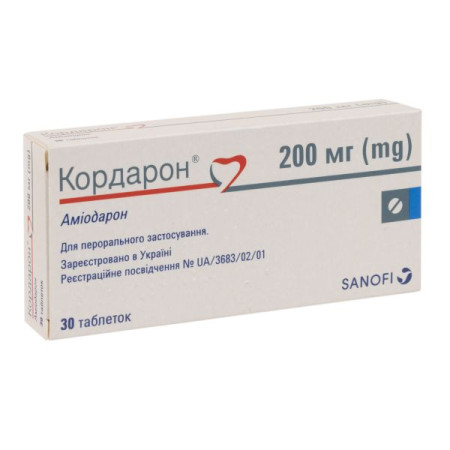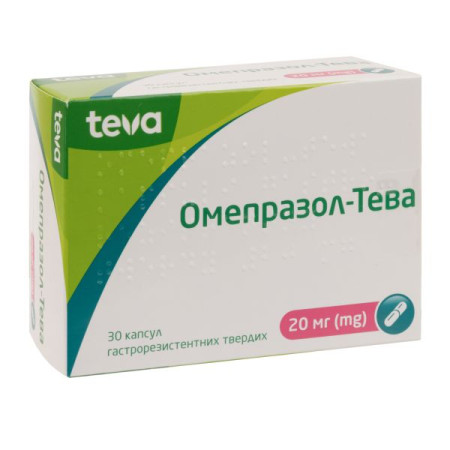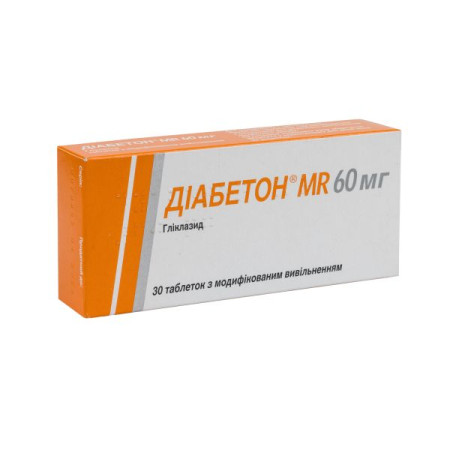Beresh Magnesium Plus B6 film-coated tablets No. 30

Instructions for use Beresh Magnesium Plus B6 film-coated tablets No. 30
Composition
active ingredients: 1 film-coated tablet contains 1.6 mg of pyridoxine (in the form of 1.9448 mg of pyridoxine hydrochloride), 250 mg of magnesium (in the form of 352.92 mg of heavy magnesium oxide and 463.93 mg of magnesium citrate);
excipients: calcium hydrogen phosphate anhydrous, microcrystalline cellulose, crospovidone, magnesium stearate, film coating AquaPolish Pink 048.15 (hydroxypropylmethylcellulose, polydextrose, talc, glycerin, titanium dioxide (E 171), yellow iron oxide (E 172), red iron oxide (E 172), black iron oxide (E 172)).
Dosage form
Film-coated tablets.
Main physicochemical properties: beige tablets, film-coated, oblong in shape, with a break line on both sides.
Pharmacotherapeutic group
Other mineral supplements, magnesium preparations.
ATX code A12C S.
Pharmacological properties
Pharmacodynamics
A combined preparation containing magnesium and vitamin B6.
Magnesium is one of the essential minerals that affects almost all body functions. Its most important actions are as follows:
· one of the main elements in energy processes. Adenosine triphosphate (ATP), a molecule that is a source of chemical energy, can enter the process of energy synthesis only in the form of a magnesium salt. Magnesium is also a cofactor of the enzyme that catalyzes this process;
· magnesium is a structural element for the formation of bones and teeth;
· regulates the permeability of cell membranes and cell organelles, the most important of which are plasma and mitochondrial membranes. This leads to increased elasticity of blood vessel walls, improved contractility of the heart muscle, and reduced risk of developing conditions that lead to arrhythmia;
· participates in the functioning of more than 300 enzymes;
· protects cells from excessive calcium intake;
· is a calcium antagonist, and in this capacity plays a regulatory role in many biological processes;
· indirectly increases the activity of the antioxidant defense system;
· reduces the possibility of developing convulsive states (eclampsia, preeclampsia), which are observed primarily during pregnancy;
· has antithrombotic activity.
Potential causes of magnesium deficiency:
- intense physical activity;
- increased need for magnesium during pregnancy or breastfeeding;
- nutritional deficiencies, malabsorption (various diets, for example, for weight loss);
- digestive and absorption disorders (intestinal disorders);
- increased loss of magnesium (diarrhea, burn injuries, use of certain diuretics);
- treatment with certain medications (certain antibiotics, immunosuppressants, chemotherapy drugs).
Symptoms of magnesium deficiency may include:
- neurological symptoms (impaired concentration);
- tremors and muscle spasms (for example, leg cramps at night).
Vitamin B6 (pyridoxine) – as a coenzyme, it participates in protein metabolism (transamination, decarboxylation, deamination, transsulfuration, formation of nicotinic acid from tryptophan, hemoglobin synthesis);
- as a coenzyme involved in the metabolism of carbohydrates and fatty acids
(conversion of glycogen into glucose-1-phosphate, conversion of linoleic acid into arachidonic acid).
Pharmacokinetics
Magnesium.
Actively absorbed from the upper small intestine, absorption is enhanced
1,25-dihydroxycholecalciferol. The extent of absorption is approximately 30-40% of the dose taken. Magnesium citrate and magnesium oxide have a good absorption profile.
Special transport proteins that require ATP regulate the transport of magnesium in plasma and mitochondria (the enzyme Ca++-Mg++-ATPase). Normally, the movement of calcium and magnesium is opposite.
On average, the Mg++ content in the body of an adult is 1000 mmol. About
50% of this amount is incorporated into bone tissue (30% of this amount can be replaced). Intracellular and extracellular magnesium accounts for 45% and
5% respectively. In blood plasma, the concentration of magnesium ranges from 0.75 to 1.2 mmol/l, with 30% of magnesium bound to various plasma proteins. It interacts to a large extent with calcium, to a lesser extent with potassium.
Most of the magnesium built into bones and teeth cannot be replaced, but magnesium is also deposited in muscle tissue, kidneys, liver, and heart.
The main organ for magnesium excretion from the body is the kidneys (range 1-250 mmol), but they also participate in magnesium storage in the body by reabsorption of the main amount in the proximal tubules (in the thick ascending segment of the loop of Henle), with excretion accounting for approximately 3-5% of filtered magnesium.
The metabolism of all components is significantly reduced in cases of insufficient kidney and liver function.
Vitamin B6.
Various forms of vitamin B6 are absorbed by passive diffusion, mainly in the small intestine and ileum.
Vitamins are deposited in two forms: partly in the form of pyridoxal phosphate, partly in the form of pyridoxamine phosphate. In the protein-bound state, a more significant amount can be found in the liver, kidneys, brain, spleen and skeletal muscles.
It is excreted in the urine in the form of various metabolites, the main of which is 4-pyridoxine acid.
The metabolism of all components is significantly reduced with insufficient kidney function.
Indication
Treatment and prevention of magnesium deficiency.
Contraindication
Hypersensitivity to the active substances and any of the excipients of the drug, simultaneous use of other drugs containing magnesium, simultaneous use with levodopa. Hypermagnesemia, hypervitaminosis B6. The use of the drug is contraindicated in severe renal failure, atrioventricular block, myasthenia gravis, severe arterial hypotension, diarrhea, phenylketonuria.
Interaction with other medicinal products and other types of interactions
Magnesium reduces the absorption of some orally administered medications (for example, tetracyclines, medications containing calcium, phosphorus, and iron, bisphosphonates, sodium fluorides), so the interval between taking these medications and Beresha Magnesium Plus B6 should be at least 3 hours.
Potassium-sparing diuretics can increase tubular reabsorption of magnesium, so they should only be taken under medical supervision.
Magnesium can reduce the level of digitalis glycosides in the blood plasma, therefore, patients taking digitalis preparations should only be prescribed the drug under constant medical supervision.
Pharmacologically significant interactions: mainly with calcium, to a lesser extent with potassium.
The use of hydralazine, isoniazid, penicillamine, and oral contraceptives increases the need for vitamin B6.
Concomitant use with levodopa should be avoided, as the effect of levodopa is inhibited when its use is not accompanied by peripheral dopa decarboxylase inhibitors. The use of pyridoxine in any quantities is not indicated if levodopa is not accompanied by dopa decarboxylase inhibitors.
Magnesium preparations weaken the effect of oral anticoagulants - warfarin derivatives.
Application features
In severe magnesium deficiency, treatment should be initiated with parenteral administration; parenteral administration is also recommended for patients with severe malabsorption syndrome.
With concomitant calcium deficiency, magnesium deficiency must be eliminated before starting the use of calcium preparations.
In mild or moderate renal insufficiency, the patient should be given a reduced dose and serum magnesium levels should be carefully monitored (to prevent hypermagnesemia).
Elevated magnesium levels have a negative effect on heart function: it slightly lowers blood pressure and slows cardiac conduction, therefore, when using magnesium, patients receiving digitalis-based medications must be constantly monitored (ECG, monitoring for decreased blood pressure). The drug should be stored out of the reach of children.
Use during pregnancy or breastfeeding
During pregnancy or breastfeeding, it is possible to use the usual daily dose, which is prescribed for adults 1 tablet once a day.
Since there are no data on the safety of the drug dosage in women during pregnancy or breastfeeding, it is recommended as a general safety measure not to exceed the maximum daily doses (defined for food supplements) of the drug components (Mg: 250 mg/day; vitamin B6: 25 mg/day) during these periods.
Ability to influence reaction speed when driving vehicles or other mechanisms
At recommended doses, the drug does not affect the ability to drive or operate other mechanisms.
Method of administration and doses
For the purpose of treatment
Adults: usual daily dosage – 1 tablet once a day.
Children aged 4-10 years: ½ tablet once a day.
Children over 11 years of age: 1 tablet once a day.
For the purpose of prevention
Adults and children over 11 years old – 1 tablet once a day.
The tablets should be taken whole at the end of a meal with 1 glass of water or fruit juice. If necessary, the tablet can be divided into two halves.
The duration of the course of treatment is at least 4-6 weeks. Depending on the patient's condition, the course of treatment may be repeated as prescribed by the doctor. The duration of the prophylactic course is 6-8 weeks.
Children
The drug is contraindicated in children under 4 years of age.
Overdose
Symptoms of possible intoxication: weakness, nausea, vomiting, bradycardia, decreased blood pressure, ECG abnormalities, depression of CNS functions, slowed reflexes, hyporeflexia, paresthesia, and in severe cases – confusion, respiratory failure, coma, cardiac arrest and respiratory paralysis, anuria.
Calcium, 100-200 mg intravenously for 10-20 minutes, can be used as an antidote.
5-10 minutes, in addition, forced diuresis and dialysis can be used.
Adverse reactions
When using the drug, diarrhea or abdominal pain may occur very rarely (in case of exceeding the doses recommended above).
In such cases, the use of the drug must be discontinued!
Nausea, vomiting, allergic reactions, including skin reactions, itching, and urticaria, may develop.
Expiration date
2 years.
Storage conditions
Store in a dry place, out of reach of children, at a temperature not exceeding 25 °C.
Packaging
10 tablets in a blister, 3 or 6 blisters in a cardboard box.
Vacation category
Without a prescription.
Producer
CJSC "Beresh Farma".
Location of the manufacturer and address of its place of business
5005, Szolnok, Nagyszándor József Str., b.39, Hungary.
There are no reviews for this product.
There are no reviews for this product, be the first to leave your review.
No questions about this product, be the first and ask your question.















